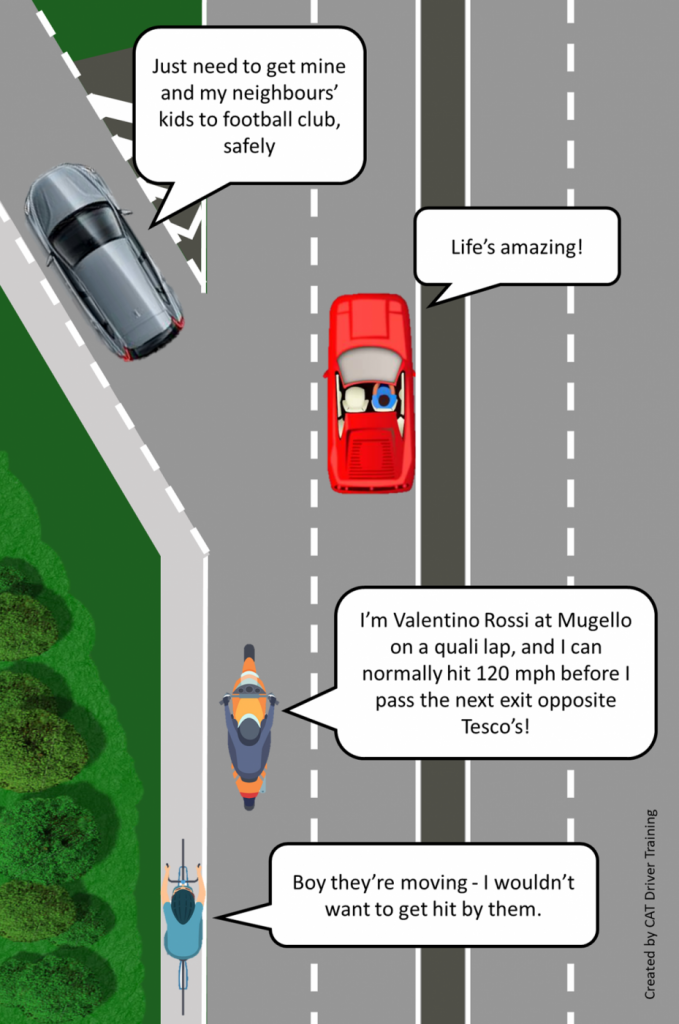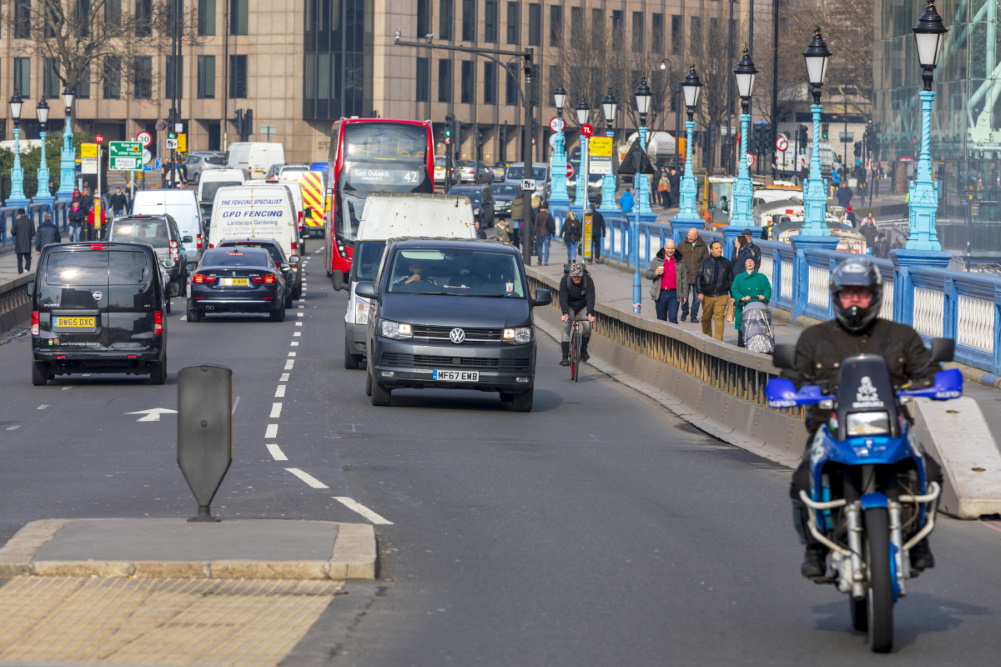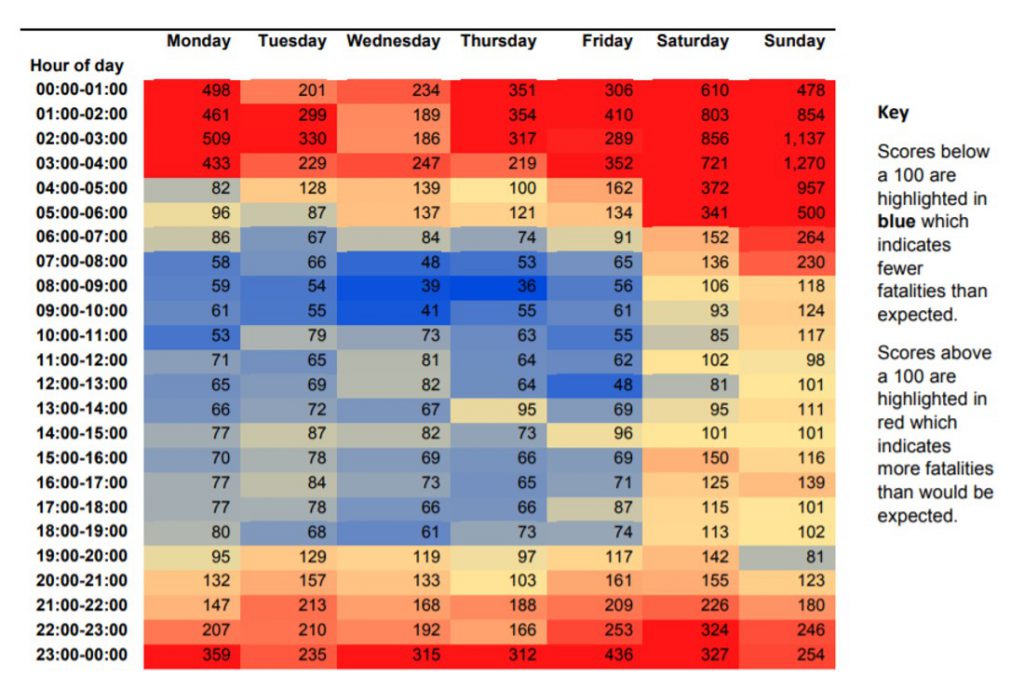

Posted: March 25, 2020
In our continued quest to see our customers and followers develop their driving skill, technique and knowledge, we are heading to the public highway, to travel through part 3 in our series about car control.
It’s all about driving on public roads. And keeping safe.
The motivators behind your journey can have a profound effect on the level of risk you may experience. Statistically, it could be loaded with varying levels simply by the time of day you choose and many other often hidden factors.
What does the ribbon of tarmac all of us enjoy driving on mean to you?
Why does your answer influence your safety and car control?
The reason for your journey and the psychological interpretation for using the road at any given time, can both increase and reduce driving risk.

When do you drive at your best?
On early Sunday morning jollies in your pride and joy?
When you’re alone?
On a driving tour with club members?
Perhaps when driving to and from work? Or dropping the kids off at school?
I have developed a fascination for how we individually view the tarmac we drive on. I’m not referring to observation and scanning skills, but the actual reasons behind the drive.
It's a weekend morning.
There’s the car enthusiast, who lives for driving and weekend “drive outs” with friends who all own performance cars. Their 500 BHP Cabrio feels amazing as they pull out onto the local dual carriageway.
Like every weekend – they enjoy blasting their baby up to 90 mph. Life’s amazing! The tarmac represents freedom, excitement, a challenge, a literal endless ribbon of happiness, accessible to any individual to express personality and driving ability.
Hold on … that’s coming up quick behind - it’s a sports bike, brightly coloured leathers abound and it’s pushing 110 mph.
The thought bubble above the rider’s head reads, “I’m Valentino Rossi at Mugello on a quali lap, and I can normally hit 120 mph before I pass the next exit opposite Tesco’s!”
The cyclist enjoying the outside world and keeping fit, on the adjacent cycle path the motorbike rider has just passed, also has a thought bubble above their head …. “Boy they’re moving - I wouldn’t want to get hit by them.”
What does the bubble read over the roof of the SUV leaving the dual carriageway in the scene above, using the tarmac as a medium to transport family/friends from A to B? “Just need to get mine and my neighbours’ kids to football club, safely”?

My point? Each of the individuals in the scene above could all be the same person but on different days at different times. Many of us own bicycles, motorbikes and perhaps more than one car. We may also have children and/or grandchildren.
When with clients on a Road Advanced Driver Training course, discussion is often around the need to drive not only your own car, but the cars around us. Not in a literal sense, but with consideration for the multitude of behavioural reasoning going on, not only around us but within our own mind.
Defensive driving makes a lot more sense when you consider the need and the skills required to manage and influence the vehicles around us.
I may consider myself a good driver, but what I must not forget, is that those driving around me are perhaps, compensating for my mistakes and vice versa.
I now see driving on the public highway as an exercise in societal cooperation.
Accepting that we all make mistakes and remaining calm is at the top of my car control priority list. Often when driving, I hold the “door open” for fellow road users – just like I do when going in or out of a shop – it’s driving that gives fellow drivers room - a forgiving nod for unintended driving errors.

Drive with a heightened sense of anxiety, anger or perhaps excited by a situation, and your body will prepare for the event you are anticipating, enduring or perhaps enjoying.
Adrenalin is a powerful substance. It’s joined by a cocktail of internal chemicals triggered by an event to help us survive a threatening situation. In the driving situation, it may not serve us well to get too excited.
In fact, statistically, driving when angry is probably the most dangerous state to be in. We begin to shut out the outside world and drive with a narrowing focus on the environment around us.
I recently learned Pilot’s refer to it as “coning in”. Being nervous or overwhelmed in a situation generates a comparable response.
The same can be said for simply being pumped up with adrenalin when driving. The physiological response from our body is to send the blood to our core and reduce the blood flow to our extremities.
Scarily that includes blood flow to our optic and auditory nerves - we begin to see and hear less. Our peripheral vision reduces - that’s not good for motorcyclists in our vicinity. If you want to see an object in your peripheral vision, it helps if it’s moving.
Try it - hold up your hand to the side of your head at arms length, hold it stationary and then move your hand. Interesting I thought when explained to me many years ago on a coaching course.
Now imagine approaching a T junction from a minor road to join the major road. The motorcycle to your right, approaching on the major road, is at an acute angle and sitting in your peripheral vision. It may even look stationary and not register as a moving object.
A heightened emotional state is now reducing your ability to sense and see the motorbike - perhaps “coning in” is now taking effect and that necessary confirmation look to the right, might be over-looked.

Life experience helps us to control and predict our emotional responses, especially if we enjoy sport and external challenges that raise our emotional state.
The experience of competition can be, not only rewarding but educational in respect to our own coping mechanisms. Like many situations we experience, repetition brings prediction and reassurance that we can manage our own reaction.
I teamed up a with Auto Trader a while back to share my Top 5 Road Safety Tips. The video covers techniques that can be easily applied to your every day driving.
Driving brings similar experiences and empowerment. Emotional equilibrium for me has become easier to maintain as I’ve aged. That said, I still have spikes in mood and concentration levels based on: the time of day I’m driving; how busy my week’s been; and sometimes, intentional scary and exciting overloads, as I still enjoy motor racing and driving on track days.
The time of day we drive is a factor not often considered when assessing the risk of a journey. We all run and respond to our own inner body clock.
Early morning starts, late nights and shift work can all affect our sleep patterns and consequently, our performance when controlling a vehicle.

You may have heard of the phrase Circadian Rhythm. A natural process designed to ensure you sleep at certain times of the day. Hence driving when your body expects you to be sleeping may see you knocking on the door of a higher risk journey.
My profession and personal learning have opened my eyes to a whole new world of journey planning and risk management. These nuanced persuaders of increased driving risk simply passed me by as a younger man. Hence you will find them discussed on our many and varied course offerings.
Drive at night and you could be up to 4 times more likely to be involved in a fatal crash. The hours between 21:00-06:00 are fatigue hot spots. Drivers are most likely to be involved in a tiredness related incident between the hours 02:00-04:00.
 Source: Department for Transport
Source: Department for Transport
My driving world has become more formulaic - information brings empowerment and lower risk when considering when to travel.
Could you reschedule your journey to a safer time? Or plan your diary or leisure time to ensure you are well-rested, hydrated and nourished, before embarking on a long journey?
Car Control is a simple phrase that means something different to all of us. If you have a desire to explore the huge canvas that car control is, then talk with Jo or Lynne on 01234 757 633 or complete the enquiry form here.
CAT’s Road Advanced Driver Training or Advanced Control Course are great starting points for your personal driving journey. You can choose to sign up for one day or a series of days with us and your sessions will be tailored exclusively to you.
Our customer-written Trustpilot reviews confirm the depth of your learning exceeds your expectations, time and time again.
Spent a fascinating day at Millbrook and out on the road with Paul who kept my attention on driving throughout a long day without me tiring in the least.
The opportunity to work with someone who not only understands the art of driving on British public roads but combines this with an engineer's appreciation of the mechanics and physics of four-wheeled vehicles is a potent stimulus to better driving and in the week since my day with CAT, I can already see that I am approaching the task of driving somewhat differently.
There really is a great deal you can learn even after driving for 40 years and I will be back to build on this start once I've had a chance to assimilate this day fully.
Click here to read more 5 star Trustpilot reviews
In our 4th instalment, we continue our car control exploration with an in-depth dive into the world of Ice Driving. CLICK HERE TO READ.
An effective and exciting way to develop car control skills and have endless sideways fun at the same time in an environment only the frozen North can offer.
Regards Colin
Call: 01234 757 633
Email: info@catdrivertraining.co.uk
CAT Driver Training is the fast way to develop & improve authentic dynamic driving skill, technique & knowledge from the Best. OEM recognised driver training for individuals & the motor industry. As the leading UK based independent advanced performance driving skills company, we exist to make your driving experience even better. Explore your cars potential, fulfill your own. Coaching advanced road & track skills, safety driver training courses for individual driving enthusiasts & advanced driving for all facets of the motor industry. The only training company resident within UTAC's Millbrook Proving Ground in Bedfordshire, within easy reach of London, & all surrounding counties: Hertfordshire; Buckinghamshire; Oxfordshire; Nottinghamshire; Cambridgeshire; Norfolk; Suffolk; Essex; & Surrey. Clients travel from the World over & the UK to learn from the authentic evidence based dynamic driving & vehicle dynamic experts. | All Rights Reserved | Copyright 2005 – 2025
Some of the links we use are affiliate links. This means that, at no cost to you, CAT will earn an affiliate commission if you click through the link and finalise a purchase.
Designed by WHP
Coded and built by Prominent Media